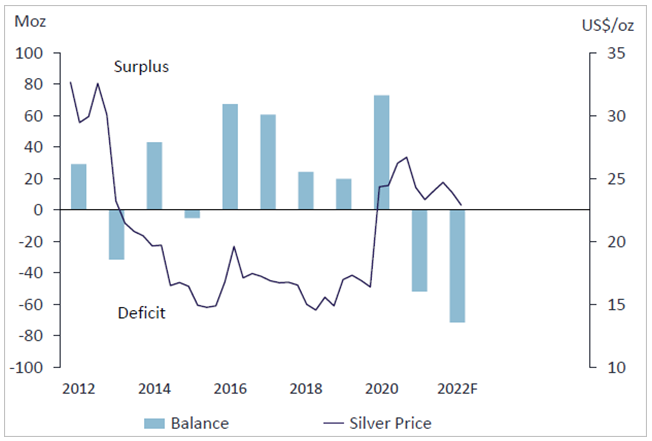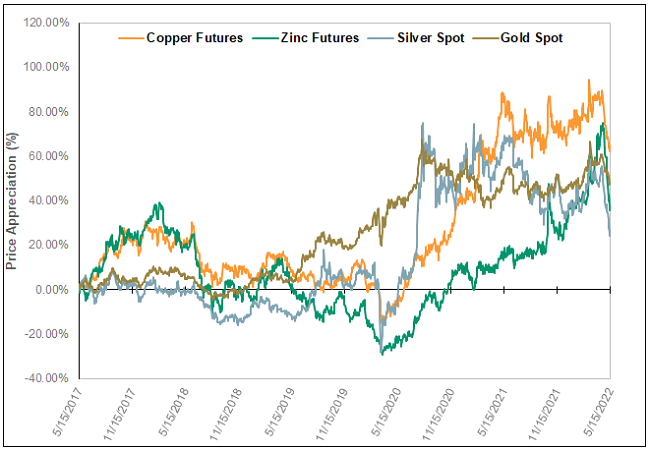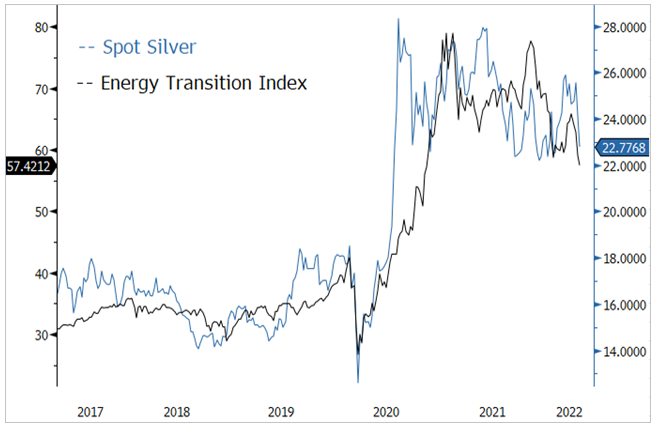
In a new Sprott Silver Report, Maria Smirnova, MBA, CFA, dug deep into silver’s interesting supply and demand situation, noting that it is historically undervalued when compared to gold.
With supply trends likely unable to keep up with longer-term demand, silver has some compelling fundamentals that could make it a smart pick in today’s market environment.
Silver bullion put up big numbers in 2020, gaining 47%. Since then, it has been in a holding pattern. Silver has been stuck in the range of $22 and $28 per ounce since 2021, with an average price of $25.14. It has not performed as well as gold of late, largely due to the fact that silver is more prone to be affected by volatility.
Silver is slightly down year-to-date, going from $23.35 at the end of 2021 to $21.72 as of May 23. Gold, in that same time, was up 1.38%. However, both of these represent strong showings when compared to the S&P 500, which declined 16.65% in that same time period.
Smirnova noted that “Although the risk-off tenor of the moment may be a headwind for short-term silver pricing trends, over the longer term, we believe silver supply constraints will become more relevant in the face of sustained, growing demand.”
After silver’s big 2020, silver mining rebounded in 2021. Mine production increased 5%, and recycling volumes grew by 7%. However, analysts had predicted more growth in mining, resulting in silver supply dropping into a deficit.

Another driving factor for silver mining activity is byproduct prices. Lead, zinc, and copper prices all drive high mining activities, essentially subsidizing silver mining in the process. This has been helpful for the silver supply of late, but if macroeconomic conditions soften and price support for those byproduct metals eases, silver’s supply has the potential to be even more diminished.

Miners are also grappling with inflation, which directly affects the cost of fuel, production, and exploration of new mining sites. This could dampen enthusiasm for mining companies ramping up their activity and further impact silver’s supply.
As supply is taxed, demand for silver is poised to explode. Silver plays a key role in green technologies. For example, silver inputs are critical for solar panel production.
The Russia-Ukraine war has pushed sentiment towards energy security and renewables. As Europe looks for avenues to wean itself off of reliance on Russian gas, EV production is likely to kick up faster than expected. Electronic vehicles also rely on silver, which has demonstrated growing correlation to energy transition equities.

Even non-industrial silver trends have shown bumps in demand. Photographers saw a post-covid rebound, and jewelry and silverware rebounded in 2021 as weddings and social events started happening again worldwide.
With supply unable to outpace demand, silver’s historic price imbalance, and larger macroeconomic trends at play, silver is poised for huge growth in the long term.
Smirnova concluded, “We continue to believe that silver is likely to benefit from supply constraints in the face of growing demand. We expect green technology and de-carbonization trends to continue and increase, even if economic growth slows globally.”
Comments